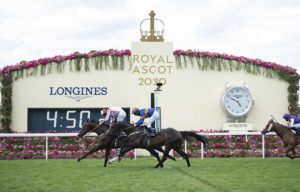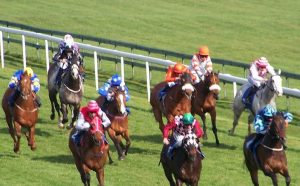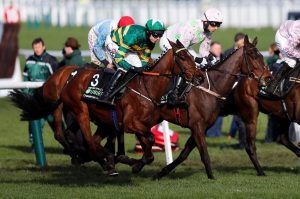The role of nutrition in racehorse performance

Close your eyes for a moment and imagine the thrill of a horse race – the pounding hooves, the surge of energy, the relentless drive to the finish line. What fuels these majestic animals as they race toward victory? More than just breeding or training, the key lies in their diet. Proper nutrition is the foundation of peak performance.
The basics of equine nutrition
Nutrition is fundamental in keeping racehorses at their best. The primary fuels for these equine athletes are fats and carbohydrates.- Fats: Provide long-lasting energy and help in building up muscle glycogen reserves, which is crucial during intense, short bursts of exercise.
- Carbohydrates: Offer quick energy, especially important for short and high-intensity activities.
Importance of fat supplementation
Most performance horses get their caloric needs met through hay and grain. However, heavy reliance on grains, which are high in carbohydrates, can lead to health problems like colic and ulcers. That’s where fat supplementation comes in.
- High Energy Density: Fat provides more calories per unit weight than carbohydrates. This means you can feed the horse fewer calories while still meeting its energy needs.
- Cooling Effect: Unlike carbohydrates, fats don’t undergo microbial fermentation, which generates a lot of heat. Hence, fat in the diet helps keep the horse cooler, especially useful in hot climates.
Timing matters
When you feed your horse is as important as what you feed them.- Two Hours Before Exercise: Feeding a grain meal this close to exercise can lower the availability of free fatty acids and glucose, essential fuels for activity. It can also increase heart rates, undermining the conditioning efforts.
- Three Hours Before Exercise: Even grain meals fed three hours before can result in decreased plasma glucose and free fatty acids, leading to heavier body weights and decreased plasma volume.
Maintaining an optimal body condition
A body condition score (BCS) around 5 is generally recommended. Overburdened joints and overheating can occur if the horse is carrying unnecessary weight, while lower scores could indicate insufficient energy reserves. Feeding for Optimal BCS means focusing on balanced rations that help maintain this optimal condition without overloading the horse with carbohydrates. The balance of energy sources, feeding timings, and portion sizes play a critical role.Practical feeding strategies
To ensure that your horse performs at its best, you need a well-thought-out feeding strategy:- Structured Feeding Schedules: Stick to regular feeding times to avoid digestive issues.
- Appropriate Portion Sizes: Large grain meals can cause health problems, so split them into smaller portions.
- Hydration and Electrolytes: Keep your horse hydrated, and only supplement with electrolytes when sweating heavily. Improper supplementation won’t provide extra benefits and may disrupt water intake.
Final thoughts -feeding for the finish line
Nutrition is the invisible force that drives a horse to its best performance. By carefully planning a diet that balances fats and carbohydrates, maintaining an ideal body condition, and timing meals for maximum energy, you set the stage for success. Proper nutrition not only enhances physical performance but also supports the long-term health and vitality of the horse. As you look toward your next race, keep in mind that feeding strategies could be the ultimate factor separating winners from the rest. And if you’re looking at the FanDuel 2024 Odds, remember that behind every top-performing horse is a carefully crafted nutritional plan—a hidden advantage that might just tip the scales in your favor.Follow us on Twitter racing365dotcom and like our Facebook page.
Latest
-
Horse Racing
Four horses who could be targeted at Royal Ascot
As the flat season begins to gather...
-
Horse Racing
Kentucky Derby 2025 – all eyes on Journalism and Baffert
America’s biggest horse race looms on the...
-
Horse Racing
Cheltenham Festival 2025 – Bookies spared bumper payout after opening day carnage
Bookmakers were spared an estimated £50 million...
-
Horse Racing
Rider’s ocular accident underscores importance of protective eyewear
Amid non-stop negotiations surrounding the need to...
-
Horse Racing
Concerns over inadequate facilities for female jockeys as racecourses miss upgrade deadlines
The Professional Jockeys Association (PJA)...
-
Ramatuelle ruled out of Breeders’ Cup Mile bid
French ace scratched from Del Mar contest following veterinary advice.
-
Horse Racing
Yahagi has every faith Forever Young is ready for Classic battle
‘Perfect preparation’ for Kentucky Derby third heading into City Of Troy clash.
-
Exciting times as Brighterdaysahead starts off at Down Royal
‘One step at a time’ for Grade One-winning mare, who was expected to go chasing this season.
-
Joseph O’Brien expecting Classic show from ‘right type’ Troy
But Kieren Fallon sounding note of caution ahead of Del Mar blockbuster.









